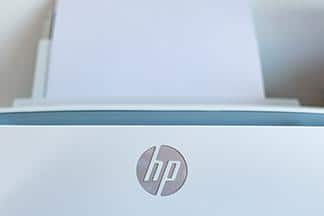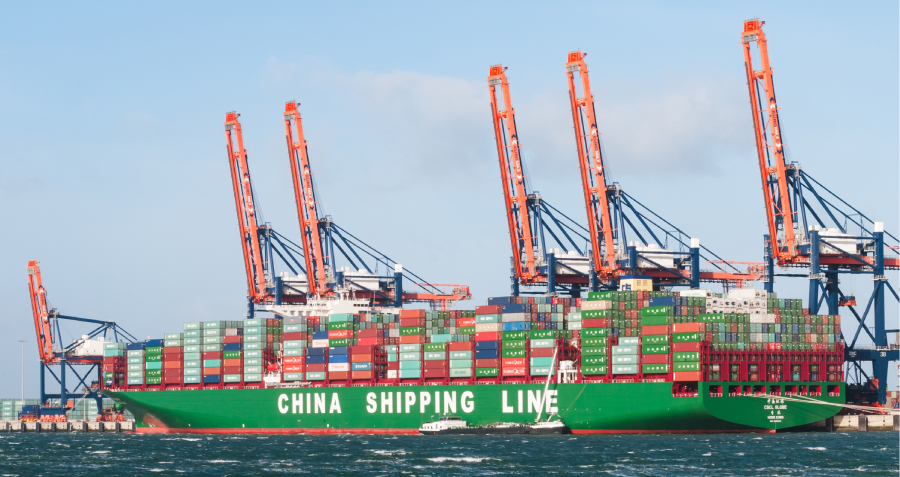In this series of articles, Professor Viard discusses the role of economics in everyday life in China and the world.
Recently, I shipped a Hewlett Packard (HP) printer that I had purchased in Beijing to use in my office in Hong Kong. It arrived in good condition and I replaced the ink cartridges with new ones that I had purchased in Hong Kong because the old ones were nearly exhausted. After finding a converter to go from the type-I outlet used in Beijing to the type-G used in Hong Kong, I thought I was ready to go.
I plugged in the printer and turned it on. I waited while it ran through its start-up check routine. Everything went smoothly until the end when I got the message: “Incompatible Cartridge – The indicated cartridges are not intended for use in this printer.” I was perplexed because I knew I had purchased the correct cartridges for my model. Moreover, I had paid extra money to purchase official HP ink cartridges (there are bootleg imitations available for less). Since these were brand new, official cartridges, I couldn’t understand why they did not work.
I sent a message to the HP customer support line. After I described the situation, they informed me that HP printers are dedicated to a region (in this case mainland China) and that cartridges from other regions (such as Hong Kong) are not compatible. Sure enough, I re-installed the old ink cartridges and the printer powered up just fine. I messaged the support line again and asked them what I could do and they responded that I would have to buy a new printer in Hong Kong.
It appeared that I had two options. I could buy a new printer in Hong Kong or I could ship ink cartridges from mainland China as I needed them. Neither option appealed to me. Although my printer is old, it is perfectly functional and I know how to use it. Shipping cartridges from mainland China either required arranging shipments every few months or holding a large inventory of them which would be worthless if the printer ever stopped working (it is old after all).
I decided to push a little harder and responded that I did not want to buy a new printer. Surprisingly, either because they are legally required to do so or because they do not want to damage customer relations, they said that HP technical support would contact me to help. I heard back quickly from a technical support representative. He said that if I would allow him to access my printer remotely he could modify its software to switch regions. I allowed him access and after some time (longer for my old printer than it would take for a newer one) he had changed the software. He asked me to reboot the printer and sure enough the error message was gone and it successfully printed a test page with the locally-purchased cartridges.
I thanked the very patient technician and then reflected on what had happened. There was no technical or mechanical reason that my printer would not work successfully in Hong Kong with local ink cartridges. After all, the technician did not have to replace any hardware. Clearly, HP had purposefully written the software to check whether the ink cartridges’ region matched that of the printer and, if not, disable the printer.
So why does HP have this “region coding” as it is called?[ I could not find official confirmation of how many regions HP uses, but some websites claim that there are four regions and that a printer’s region can be changed in the software three times before it becomes permanent.] Clearly it is hoping that very few people do what I did – ask a technician to reprogram their printer. That costs them money. What they hope is that customers buy a new printer (and cartridges) in the region that they live. Why does HP care? I speculate that HP wants to price discriminate – an idea I have discussed before. That is, HP wants to charge different prices in different regions based on how price sensitive customers are in each.[ For example, as of September 15, 20120 an HP Laser Jet Pro MFP M227fdw printer sells for RMB2,799 (USD413) in mainland China but for HKD2,488 (USD321) in Hong Kong (prices from HP’s website and converted to USD based on www.xe.com). A high-capacity toner cartridge for this printer (HP 30X) is currently RMB719 (USD106) in mainland China and HKD857 (USD111) in Hong Kong.] Price sensitivity could differ based on income levels, how printers are used, or how much competition HP faces. I should not single out HP, many other printer manufacturers employ “region coding” presumably for the same reason.
For this to work, HP must prevent a printer designed for use in one region from easily being used in another region. Otherwise, enterprising middlemen will buy printers in low-priced regions and import them to high-priced regions to be resold. The “region coding” is used to make this kind of arbitrage difficult. Printers could still be imported from another region in bulk but they would be of little use to customers without ready access to compatible cartridges.
Having printed out my test page, I now had a functioning printer and an important lesson in the mechanics of price discrimination.





















